If you are planning to visit Uzbekistan, don’t skip the Samarkand. The city which was declared a UNESCO World Heritage Site in 2001. Samarkand was built on the Silk Road and used to belong among the biggest and most important trade centers in Central Asia. Here is a list of what to see in Samarkand and a bit of history of the incredible city.
The Silk Road stretched from China all the way to Rome. The most important Uzbekistan cities that gained a lot of wealth thanks to the silk trade were Chiva, Bukhara, and Samarkand. During Samarkand’s long history, the city was conquered several times by various rulers and in the 12th century, it became a part of the Mongolian empire under the leadership of Genghis Khan himself.
Samarkand experienced the greatest prosperity during the reign of the cruel conqueror Timur, who became a huge symbol for the Uzbekistan nation. Timur created a vast empire that stretched over the territory of today’s Iran, Turkmenistan, Uzbekistan, and Afghanistan. He made Samarkand the capital of his empire. Timur’s conquering methods were very cruel and it could even be said to be genocidal. It is estimated that 17 million people were massacred during his rule.
His grandson, Ulugh Beg, took the throne after Timur’s death and made Samarkand into one of the most important scientific centers of the Middle Ages. Ulugh Beg loved science and many universities, as well as other buildings, were built in Samarkand under his rule. The most notable is the Ulugh Beg Observatory, where many important mathematicians and astronomers came together to do scientific work.
In the 17th century, the glory of Samarkand decreased dramatically and the city lost its significance. The country’s administration moved to Bukhara, another very interesting city in Uzbekistan. The Silk Road was diverted and most of the monuments began to waste away.
After the First World War, Uzbekistan became a part of the Soviet Union. Uzbekistan regained its independence after the collapse of the USSR in 1991. During times, most of the monuments were heavily damaged by numerous earthquakes, and the Soviets began extensive reconstruction. The country is currently experiencing relatively high unemployment rate and poverty, as Uzbekistan is a very closed-off country. The newly elected government is trying to open the country to Western investors.
Things to know before traveling to Uzbekistan
Registan – the main Samarkand square
Registan is the most important square in Samarkand and has a very significant value for the locals. People got together in the square for public speeches, but also for executions. Registan square is dominated by three madrasas, which are positioned opposite each other to create an open square-shaped space. These madrasas, or Islamic schools, weren’t built at the same time, as it may seem. The left madrasa was built in the 15th century during the reign of Ulugh Beg himself, who even taught at the school. He taught mathematics, astronomy, and philosophy there. He also invented the sextant there, the remains of which can be seen in the Ulugh Beg Observatory.
 If you imagine madrasas in Samarkand as typical of today’s schools, then you are mistaken. Madrasa was an Islamic college or university, where study subjects were mainly religion and other sciences such as physics, medicine and so on. The building contained no large lecture halls, but small chambers where students lived and educated themselves. It was more of a self-study institution with a dormitory and it was very prestigious at the time.
If you imagine madrasas in Samarkand as typical of today’s schools, then you are mistaken. Madrasa was an Islamic college or university, where study subjects were mainly religion and other sciences such as physics, medicine and so on. The building contained no large lecture halls, but small chambers where students lived and educated themselves. It was more of a self-study institution with a dormitory and it was very prestigious at the time.The right madrasa of Sher-Dor wasn’t built until the 17th century and several decades later the last madrasa of Tilya-Kori, which also served as a mosque, was completed. Very interesting is the image of tigers on the middle madrasa, as Islam forbids to display living entities in such buildings.
The Mausoleum of Shaybanids belonging to a family of the same name, which ruled in this area until the 14th century, isn’t located far from the Registan square.
Bibi Khanym Mosque
The construction of this great and beautiful mosque was started in 1399 by Timur himself. The great warrior had just returned from his successful campaign in India and brought great wealth. It was used to build one of the most remarkable mosques in Samarkand. But from the very beginning, the building was subject to various complications. Timur wasn’t happy with the construction, especially with the structural stability of the building. Bibi Khanym began to slowly collapse after a few years. Several ongoing reconstructions and building modifications were carried out. However, these were canceled at the end of the 16th century and the mosque slowly began to fall into ruins. Several earthquakes and local people who took bricks to build their houses in Samarkand completed the job.
At the beginning of the 20th century, Bibi Khanym was nothing but a large ruin. When Uzbekistan was being occupied by the Soviets, they gradually began with extensive reconstructions of the buildings in both Samarkand and Buchara, including the Bibi Khanym mosque. Even today, the renovation isn’t still complete, but we can at least imagine how beautiful this mosque used to be.
An interesting feature of this building is the huge stone pedestal that was to carry the Koran. It is built in the middle of a huge courtyard, in the mosque of Bibi Khanym.
 While visiting Samarkand and other Uzbekistan cities, you may be surprised by the uneven walls of most of the sights. The crooked arches and sloping minarets make a very strange impression as if the building is about to collapse. The reason for that is apparently an extensive reconstruction that these monuments went through during the 20th century. Most of them have been marked by the ravages of time and frequent earthquakes. After a few centuries, the only reminders of the glory and glamor of these beautiful buildings were the falling-apart brick walls. When the restorers set about rebuilding these monuments, their work wasn’t easy at all. Most of them were in a very poor condition. Probably this is why the renovated madrasas and mosques are a bit crooked.
While visiting Samarkand and other Uzbekistan cities, you may be surprised by the uneven walls of most of the sights. The crooked arches and sloping minarets make a very strange impression as if the building is about to collapse. The reason for that is apparently an extensive reconstruction that these monuments went through during the 20th century. Most of them have been marked by the ravages of time and frequent earthquakes. After a few centuries, the only reminders of the glory and glamor of these beautiful buildings were the falling-apart brick walls. When the restorers set about rebuilding these monuments, their work wasn’t easy at all. Most of them were in a very poor condition. Probably this is why the renovated madrasas and mosques are a bit crooked.During your trip to Samarkand, don’t forget to visit Siyob Bazaar – local market, which is also the largest market in the city. It is a popular tourist spot, where almost anything can be bought. It is located right next to the Bibi Khanym mosque.
Ulugh Beg Astronomical Observatory
This monument has a very significant position in Samarkand, as it was one of the best observatories in the Islamic world. It was built in 1429 by Ulugh Beg himself, who, together with the most prominent astronomers of that time, used it to observe the night sky and determine the positions of the stars. The dominant feature of the Observatory was a huge sextant with a radius of 40 meters. It was oriented with amazing precision along the meridian line from south to north.
Ulugh Beg and his colleagues recorded the location of up to 1018 stars with utterly unbelievable precision. Compared to today’s data obtained by optical instruments, the differences are indeed very small. Most of the findings gained in this Observatory were the building blocks of modern astronomy, which then transferred to China and from there gradually to Europe. Astronomy in Europe was however under a strong influence of the Church and its teachings, so it took several decades and sometimes hundreds of years to push through some opinions.
After Ulugh Beg’s death, the Observatory in Samarkand was destroyed and plundered by religious fanatics. Scientists were banished and most of the books were burned. In 1908, the foundations of the Observatory were discovered along with the underground part of the huge sextant. There wasn’t much left of the Ulugh Beg Observatory. Nowadays there is a museum built in the place of the former Observatory, which is open to visitors. It’s possible to find a model of the old observatory here, which was built according to the historical records. We definitely recommend visiting this museum if you are in Samarkand.
Gur-i Amir Mausoleum – Tombs of Timur and Ulugh Beg
This architectural complex in Samarkand houses tombs several very important personalities that formed the history of Uzbekistan. The famous Timur, his two sons, and two grandchildren, including Ulugh Beg, rest there. Among the tombs of family members is another tomb, where Timur’s teacher is buried. But Timur was supposed to be buried somewhere else. He had a tomb built for himself about 80km from Samarkand in a small town called Shahrisabz where he was born. Gur-i Amir Mausoleum was supposed to be a grave for his beloved grandson Muhammad Sultan, who died very suddenly.
When Timur eventually died in February 1405 during a military expedition to China, the weather was freezing cold. Because of the unfavorable weather, it wasn’t possible to transport his dead body to his own tomb in Shahrisabz, which is why he was later buried in the Gur-i Amir crypt in Samarkand. Over time, this mausoleum became a family crypt, and Ulugh Beg was later placed there as well.
The great warrior Timur seems to be a force to be reckoned with even hundreds of years after his death. In 1740, the King of Iran attempted to take Timur’s sarcophagus as spoils of war. On the way, the tomb broke and the king interpreted it as a bad sign. That’s why he decided to return it to its place in Samarkand. In the mid-1920s, Timur’s remains were examined by a Soviet anthropologist in order to create his portrait. The scientist found the inscription inside the tomb: “Whoever dares to disturb my peace will call the demons of war on their land”. Three days later Hitler attacked the Soviet Union.
Shah-i-Zinda – Tombs of Kings and a Pilgrimage Place for the Uzbeks
Shah-i-Zinda is a complex of royal tombs in Samarkand from the 11th – 15th century, which are grouped one next to another in a long street. That is why the mausoleum is called “Street Cemetery”. For Uzbeks, Shah-i-Zinda is a sacred and very important pilgrimage site. A legend says that the cousin of the Prophet Muhammad is buried here. He spread Islam in those lands during the Arab invasion. Those who can’t afford the expensive trip to Mecca travel here at least.
The complex includes up to 20 buildings, beautifully decorated with blue tiles. Perhaps the most beautiful tomb is the Shodi Mulk Oko Mausoleum, the place of rest of Timur’s sister and niece. The decoration on this building was made with such exceptional quality that it didn’t need almost any repairs.
We would also recommend a visit to the Afrasiab Museum Samarkand, which is located close to this complex.
Liked this post? PIN IT FOR LATER!!
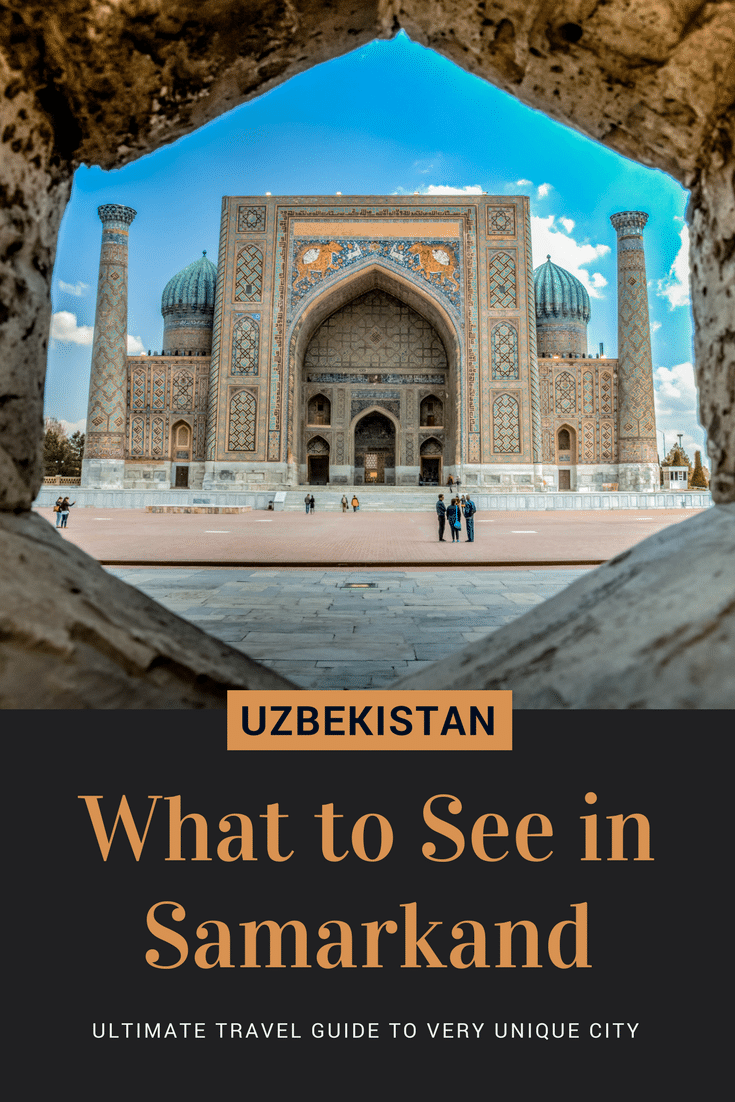

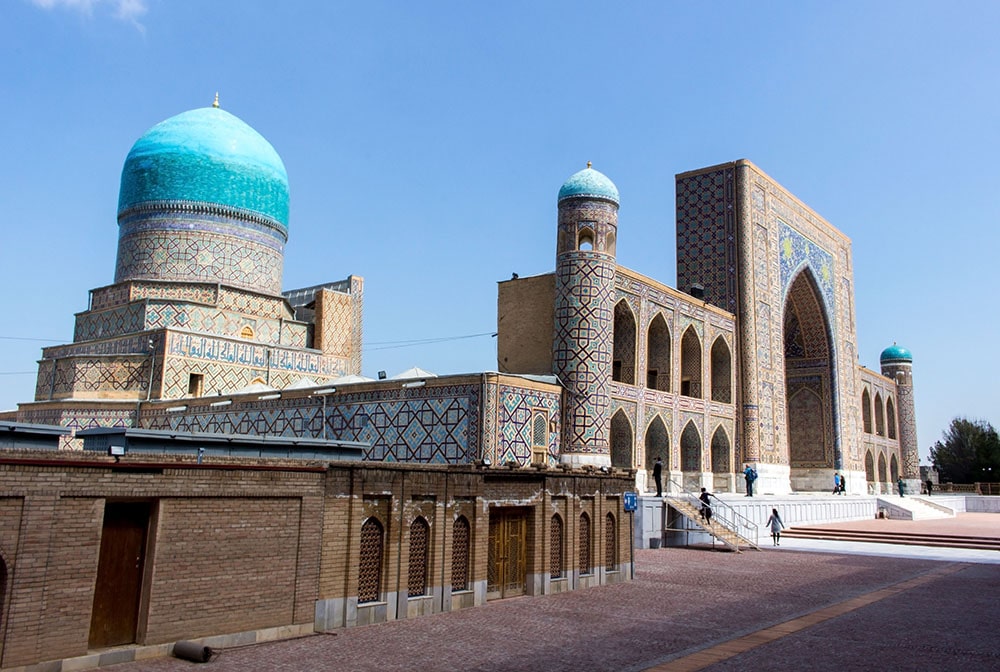
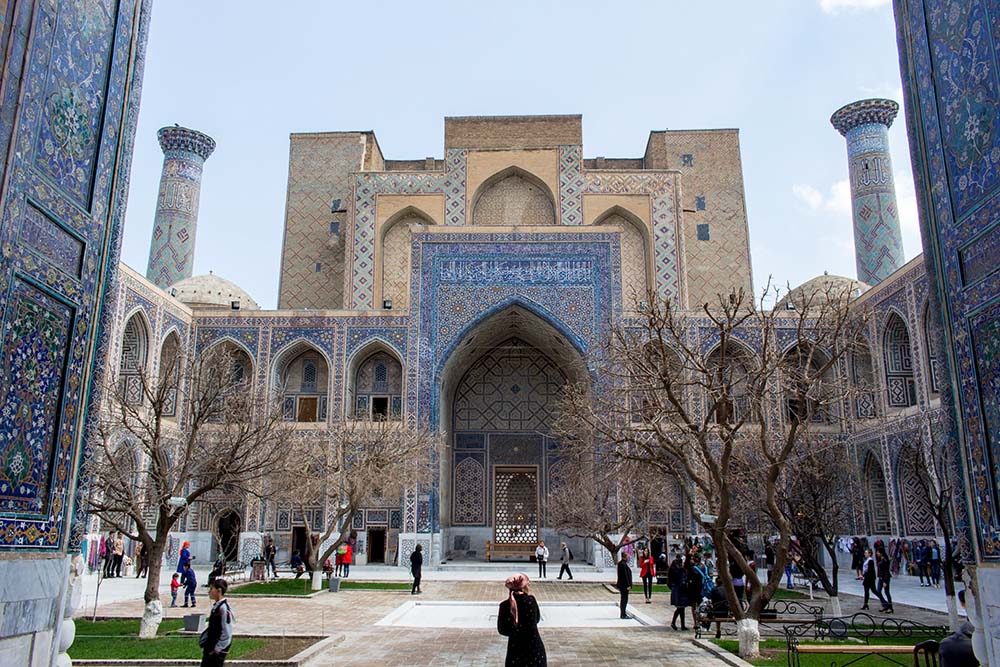

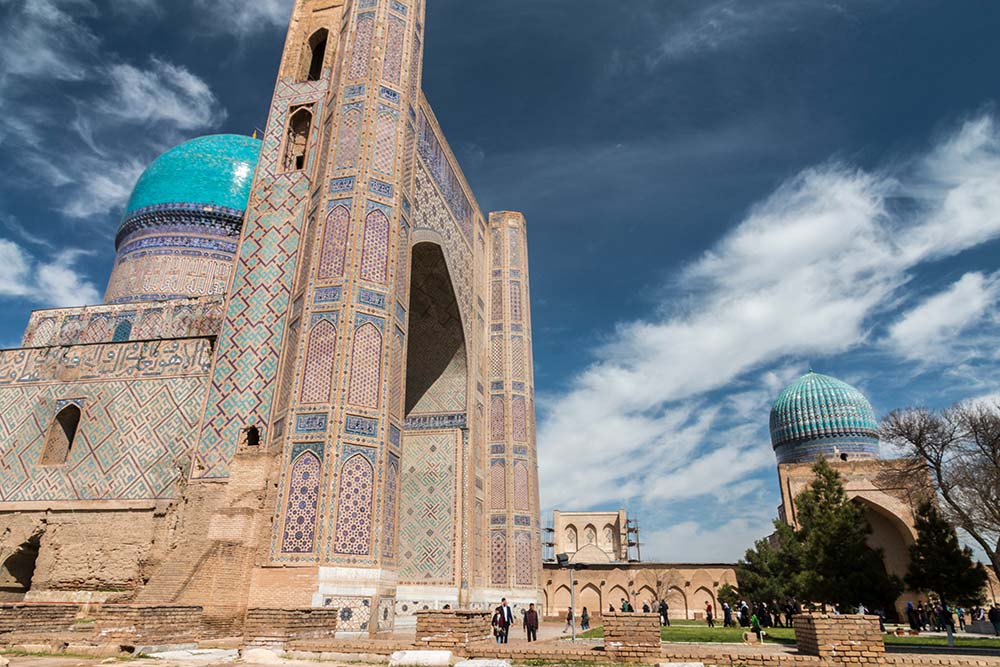
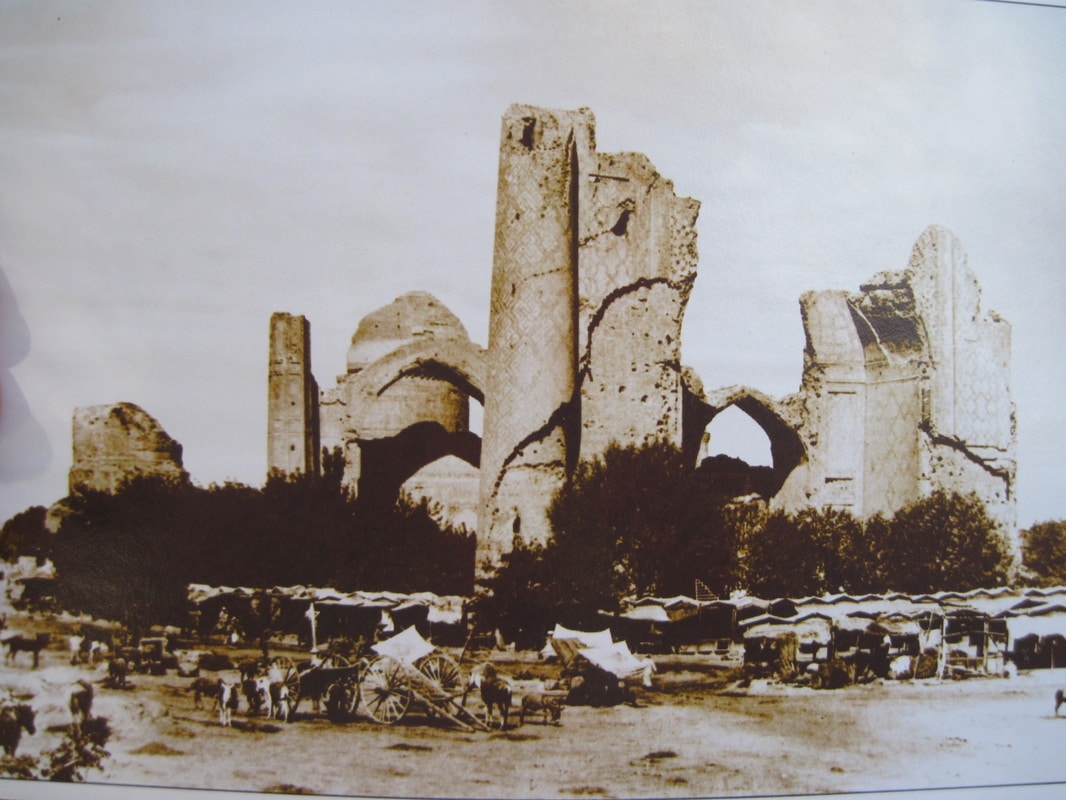


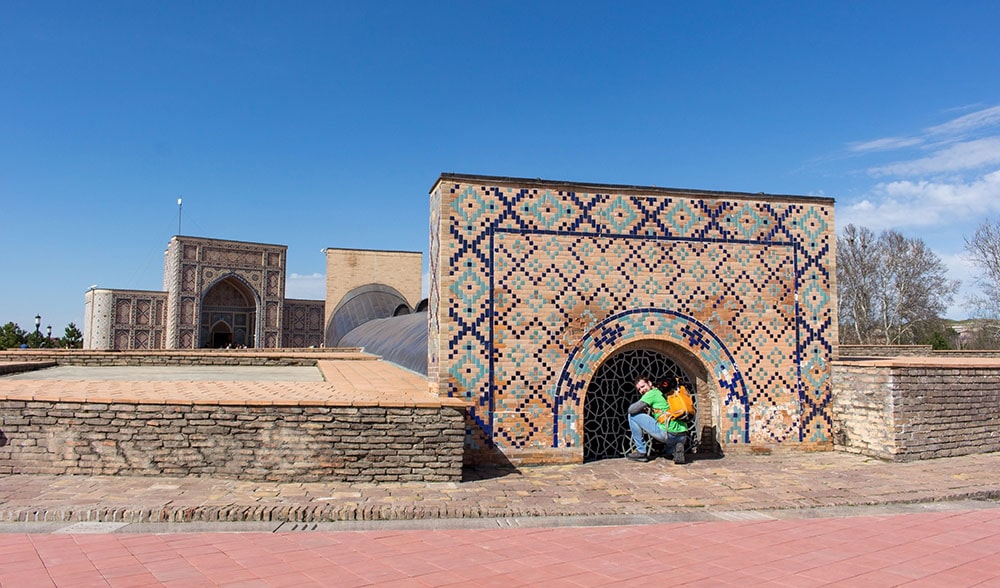
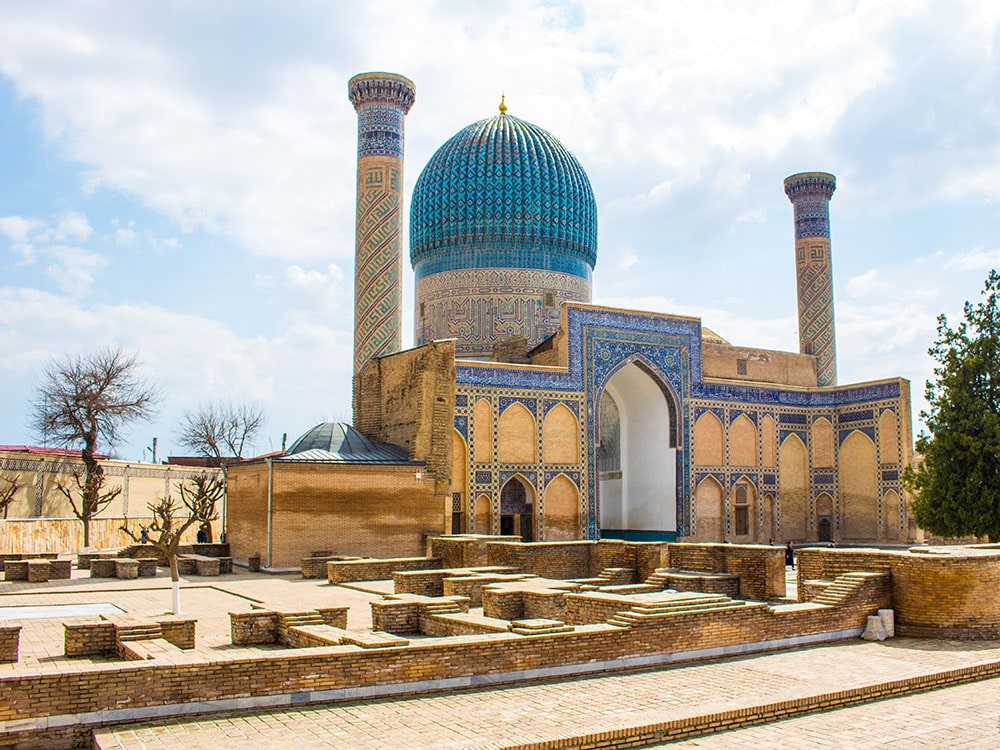
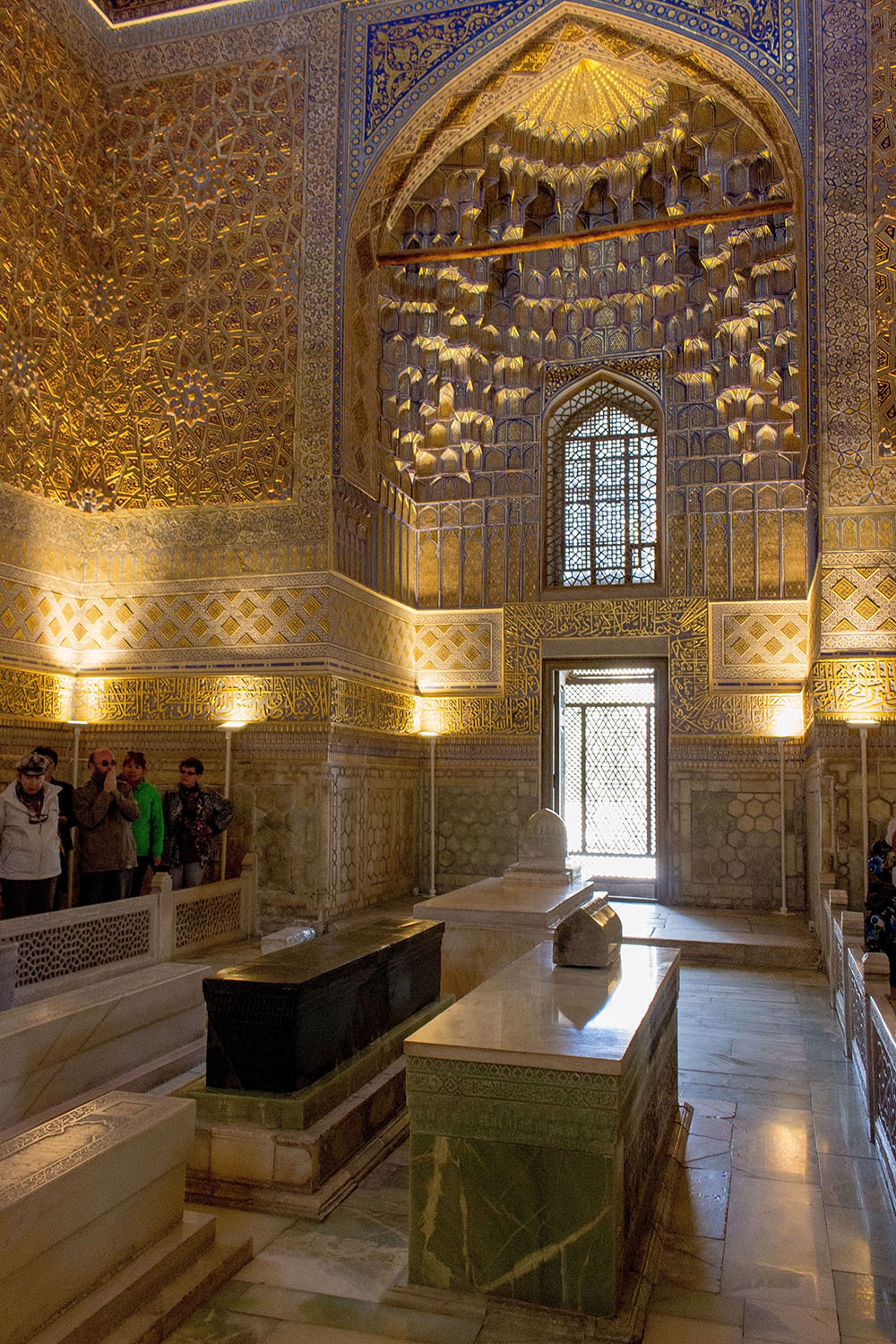
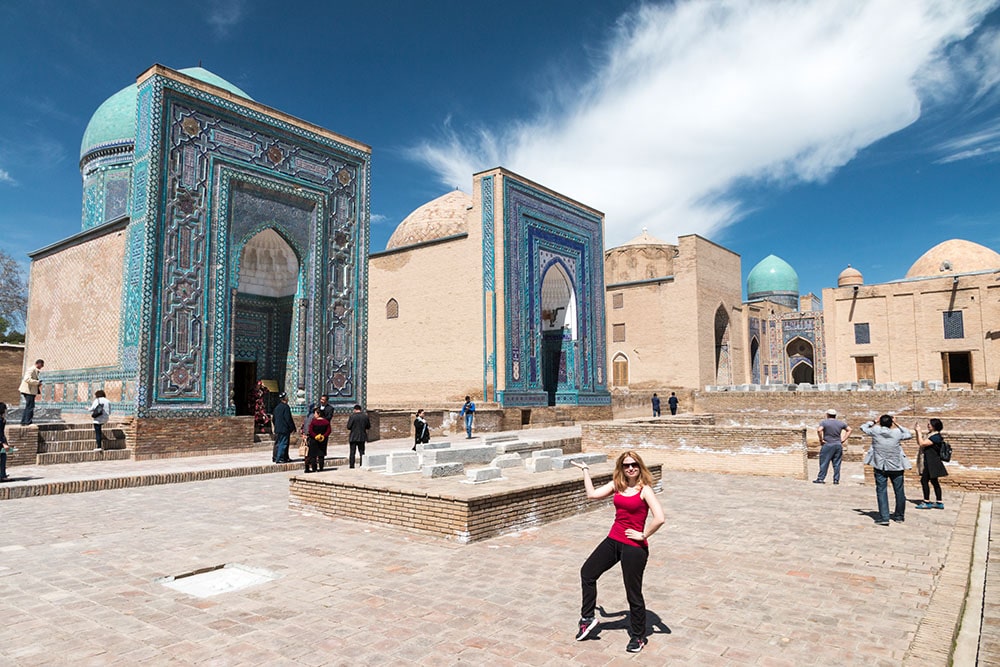

Wow the architecture there is really impressive and it looks like they did an amazing job of restoring things. It’s sad to hear that their unemployment is so high, but I hope the new leader will turn things around. Thanks for sharing on #TheWeeklyPostcard.
Thank you Anisa for your post. I think they did amazing job of restoring too. And I am happy the even did it, beacuse this architecture is so unique.Yeah, this country is very close to other world and I hope it will be better in the future.
All of these photos are lovely, but that photo of Registran Square is FLAWLESS. Is it HDR??? The detail is absolutely so clear and the contrast is perfect! I’d love more details on your settings if you don’t mind sharing. I can’t get over the detail on the madrasas. The colors are so beautiful and everything fits together beautifully. I can’t even imagine things like this in my mind, so I’m in awe of the people who are able to create it. #TheWeeklyPostcard
Thank you so much, I am glad that you like my photos 🙂 I took this picture with Canon 70D + Canon EF-S 15-85mm f/3,5-5,6 IS USM. It was set to 15mm, f/11, 15 sec. and ISO 100. I always shoot in RAW so then I did some small postprocessing in Photoshop 😉 If you want I can send the original photo 😉
So interesting to learn more about this region!! I’ve seen a ton of pictures before of that square and would love to go! The colorful mosaic -like architecture really fascinates me and now learning more about the history. the cruel ruler and then his grandson is so fascinating! Definitely pinned for later! Thanks for sharing with #TheWeeklyPostcard!
Thank you for your comment, I must admit I fell in love with this architecture, because this is something different than Westrn world arhitcture. And if you know the history your visit of Uzbekistan has wider dimension. Highly recommened 🙂
I’ve seen the Blue Mosque and Hagia Sophia in Istanbul, but haven’t seen anything so impressive as Bibi Khanym mosque. I can only imagine how stunning this is going to look when they are done restoring it. #TheWeeklyPostcard
I haven’t been in Istanbul, ( I hope one day I will go) ..so I cannot compare it. The truth is I really admire the people who restored the all mosques and other monuments, this is something really impresive .
I can’t wait to visit Uzbekistan one day. The Madrasas and the architecture in Samarkand all looks so incredible. One day! #TheWeeklyPostcard
Hi David, yeaah one day, it is really easy country and everything is so cheap and the archiecture is so unique !
This region of the world holds a unique charm for us – we’re just fascinated with the culture and architecture. The Samarkand seems to have an abundance of those elements, and we’d love to visit one day! We don’t know a lot about Uzbekistan, though, so we appreciate you sharing this on #TheWeeklyPostcard!
Hi Rob and Ann, thank you for this post. I didn´t know much about Uzbekistan before I visit this country and I must admit I it one of the most interesting places I have ever been. It has a lots of to offer to the visitors. I hope one day we will come back.
Hi! I live in Samarkand. Eva you are right. Samarkand is very beautiful city and historical city. Especially there is many historical monuments. People of Samarkand so politely. Came to Samarkand again. We will wait guest!
Hi, I am glad you like our article. I hope it helps to motivate more people to come and discover the beauty of Samarkand.